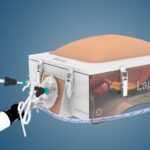Applied Behavior Analysis (ABA) is more than just a method—it’s a flexible, evidence-based approach that helps children with autism develop new skills and improve behaviors. The success of ABA depends largely on the tools and techniques therapists use during sessions. Each item in a therapist’s toolbox is carefully chosen to meet the unique needs of the child. At beyond infinity aba, therapists are trained to use these tools creatively to build trust, encourage progress, and celebrate every small win.
Building Blocks: The Basics of ABA
Before diving into tools, it’s important to understand the structure of ABA. It is based on observing behavior, identifying triggers, and reinforcing positive actions. Therapists break skills into small steps and teach them through repetition and reward.
Reinforcers: The Heart of Motivation
Reinforcers are the rewards that encourage a child to repeat positive behavior. These can include toys, snacks, praise, or screen time. Finding the right reinforcer makes all the difference in keeping children engaged and motivated during therapy.
Visual Schedules: Making the Day Predictable
Visual schedules help children understand what’s coming next. These tools can be pictures, charts, or digital apps that show daily routines. They reduce anxiety by creating structure and helping kids transition smoothly between activities.
Token Boards: Rewarding Small Wins
Token boards allow children to collect tokens for good behavior or completed tasks. After collecting a certain number, they can trade them for a bigger reward. This helps children see progress and stay motivated over time.
PECS: Communication for Everyone
The Picture Exchange Communication System (PECS) is a tool that helps non-verbal children communicate by using pictures. By giving a picture of what they want, children learn to express needs and make choices independently.
Task Analysis: Breaking Down Big Tasks
Some skills, like brushing teeth or getting dressed, can feel overwhelming. Task analysis breaks down these tasks into smaller, manageable steps. This allows therapists to teach each step slowly and clearly, one at a time.
Prompting: The Gentle Push Forward
Prompting means giving hints or guidance to help a child complete a task. Prompts can be verbal, physical, or visual. Therapists gradually reduce these prompts as the child learns to do tasks on their own.
Data Collection: Measuring Progress
ABA is science-driven. Therapists collect data during each session to track progress and adjust teaching methods. This allows therapy to be tailored to what works best for the individual child.
Social Stories: Learning Through Storytelling
Social stories use simple text and pictures to teach children how to handle real-life situations. Whether it’s going to a birthday party or dealing with loud noises, these stories help children learn expected behaviors in a friendly way.
Play-Based Techniques: Learning Through Fun
For young children, play is the best way to learn. Therapists use games, toys, and pretend play to teach important skills like sharing, waiting, or making eye contact. It’s fun for the child and effective for the therapist.
Parent Involvement: Extending Therapy at Home
Parents are essential partners in ABA therapy. Therapists provide training and tools to help parents reinforce what the child is learning during sessions. This teamwork builds consistency and speeds up progress.
Technology Tools: Taking Therapy Digital
In today’s world, technology is a powerful part of ABA. Tablets, apps, and timers are used to make learning fun and organized. Some apps help track behavior, while others offer games that teach important skills.
Expanding Access with Virtual ABA Therapy
One of the most helpful tools in recent years is virtual aba therapy. Through video calls, therapists can now reach children who may not be able to attend in-person sessions. Virtual sessions allow therapists to work directly with families in their home setting, offering flexibility and real-life teaching moments. It also helps children get therapy even if they live in rural areas or have busy family schedules.
Behavior Charts: Tracking Success Visually
Behavior charts help children see their own progress. These can be simple charts with stickers or more complex digital versions. Watching their success grow helps children feel proud and motivated.
Role Play: Practicing Real-Life Situations
Therapists often use role-play to teach children how to behave in everyday situations, like ordering food or making a new friend. Practicing in a safe space builds confidence and prepares them for the real world.
Sensory Tools: Supporting Sensory Needs
Some children with autism have sensory challenges. Therapists use sensory tools like fidget toys, weighted blankets, or noise-canceling headphones to help children feel calm and focused during sessions.
Shaping: Rewarding Progress Step-by-Step
Shaping is a method where therapists reward small steps toward a bigger goal. If a child is learning to say “hello,” they might first be rewarded for eye contact, then for waving, and finally for saying the word. It’s all about steady, positive progress.
Generalization: Using Skills Everywhere
Learning a skill is only useful if it works in different places. ABA therapists make sure children can apply what they learn at school, home, or in public. Tools and techniques are chosen to help children generalize their skills across all settings.
Conclusion
The tools and techniques in a therapist’s toolbox are more than strategies—they’re lifelines that guide children toward growth and independence. Whether through face-to-face sessions or virtual ABA therapy, these methods are flexible and powerful. At Beyond Infinity ABA, every tool is used with purpose and care, unlocking potential one step at a time. Empowering children begins with the right tools—and the heart behind them.
- The Therapist’s Toolbox: Tools and Techniques That Make ABA Work
- Applied Behavior Analysis (ABA) is more than just a method—it’s a flexible, evidence-based approach that helps children with autism develop new skills and improve behaviors.
- virtual aba
Related posts:
 How Laparoscopic Simulators Improve Precision & Reduce Surgical Errors
How Laparoscopic Simulators Improve Precision & Reduce Surgical Errors
 Exploring the Best Non – Surgical Treatments for Fibroids in Gurgaon
Exploring the Best Non – Surgical Treatments for Fibroids in Gurgaon
 Comprendiendo el Precio de Trasplante de Cabello y Sus Factores
Comprendiendo el Precio de Trasplante de Cabello y Sus Factores
 When Should I Be Concerned About Cramping During My Pregnancy?
When Should I Be Concerned About Cramping During My Pregnancy?
 Understanding the Growth of the Premenstrual Syndrome (PMS) and Menstrual Health Supplements Market
Understanding the Growth of the Premenstrual Syndrome (PMS) and Menstrual Health Supplements Market
 Premium Roofing Tile Solutions in Des Moines, IA by Joury Tile Service
Premium Roofing Tile Solutions in Des Moines, IA by Joury Tile Service
 Leading Rehab Center for Spine and Bone Deformities in India – Arunalaya Experts
Leading Rehab Center for Spine and Bone Deformities in India – Arunalaya Experts
 How a Verified Gastroenterologist Email List Transformed a Healthcare Marketing Campaign
How a Verified Gastroenterologist Email List Transformed a Healthcare Marketing Campaign







